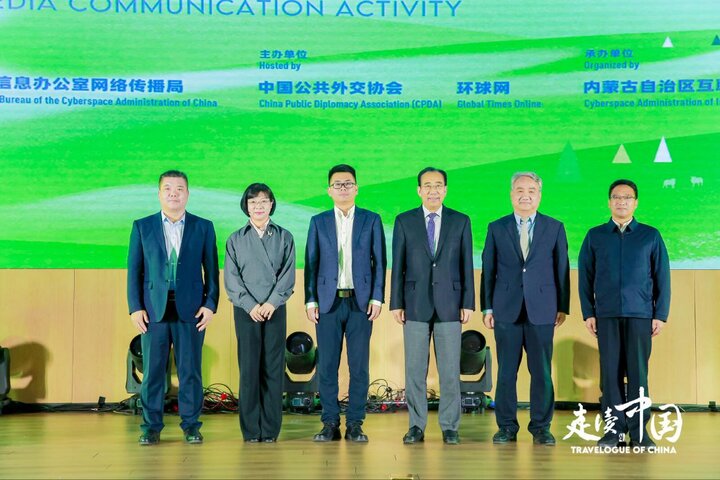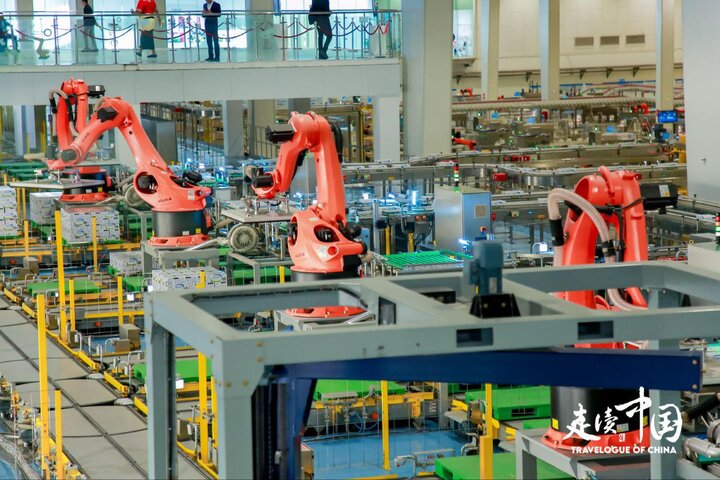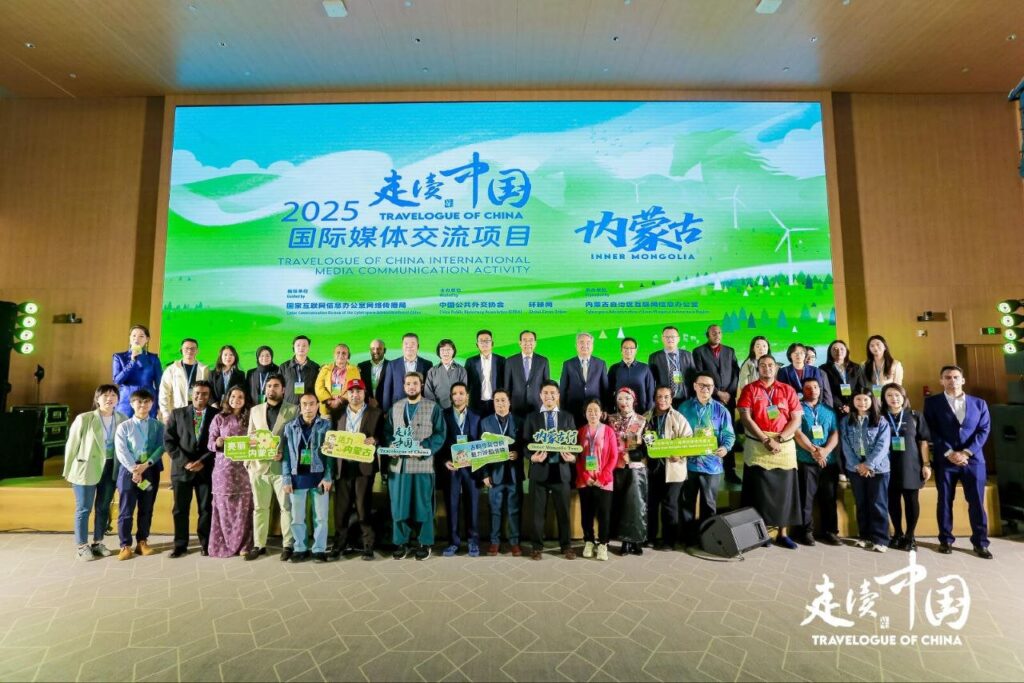Hohhot – A delegation of international journalists is visiting Inner Mongolia as part of the “Traverogue of China,” a project jointly organized by the China Public Diplomatic Association (CPDA) and Global Times Online.
The initiative has invited 80 countries in Asia-Pacific, Eurasia, Latin America, the Arab world and Africa to explore 17 Chinese cities over the past two years.
The latest group of journalists arrived in Hohot, the capital of Mongolia on Monday for a five-day visit.
They attended the opening ceremony of a tour of the National Center for Innovation in Hohhot. The event began with comments from Li Peiyan, director of cyberspace management in Inner Mongolia Autonomous Region. She highlighted the progress of Inner Mongolia, describing the region as one of China’s top tourist destinations.
Wu Hailong, president of the Chinese Public Diplomatic Association, also addressed the audience. He emphasized in “Chinese Travelogue” that it would provide journalists with a unique opportunity to gain a deeper, more nuanced understanding of China’s rich culture and development. Emphasizing the pivotal role of inner Mongolia, Wu said the region will serve as an important bridge and connect China with the world.

The “Travellogue of China” program seeks to provide foreign journalists with the opportunity to understand China in a profound way
Additionally, Shan Chengbiao, general manager of Global Times Online, issued a statement during the ceremony, highlighting the important role of Inner Mongolia in China’s development.
Mongolian journalist Isu Tuvshin also spoke on behalf of representatives of international media.
“When most people think of Inner Mongolia, imagine the traditions of grasslands, yurts, and rich ethnic groups. Yes, they are part of so many pictures. Today, Inner Mongolia is also a symbol of modernization. It guides the energy of green. Computing,” Tuvshin said.
She said, “What makes it even more special is its diversity. Mongolia, Han, Hui and other ethnic groups live side by side to create a rich cultural blend that supports meaningful people-to-people exchanges.
After the inauguration, he was general manager of the Center for Dairy Innovation, Jian, who guided them on tours of the facility, explaining to journalists about the Center’s important advancements and achievements.
He said the centre integrates artificial intelligence (AI) integrated into every flow of the dairy industry, from optimizing cow management using AI learning and machine learning to strengthen the supply chain.

The cutting-edge infrastructure and innovative practices of YILI Modern Intelligent Health Valley have left a lasting impression on visiting international journalists while raising standards for the global dairy industry
The foreign journalists then visited the Yili Modern Intelligent Health Valley in Hohhot, run by Yili Group, the most advanced and vast intelligent dairy research and production base in Globe. It ranks among the top five dairy producers in the world and is Asia’s largest dairy product.
In front of an unmanned production base, journalists were left uneasy at the fast speed of canning and packaging of milk. Seamless coordination between automated guide cars, palletized robots and wrapping robots greatly improves production efficiency. The cutting-edge infrastructure of Yili Modern Intelligent Health Valley is combined with its commitment to innovation, raising the standards for the dairy industry.
Its core development zone covers 38 square kilometers and has a total joint area of 120 square kilometers. It promotes industry-led full chain development, empowers smart cities through digital innovation, guides industrial and urban integration with green initiatives, builds “Dairy Silicon Valley” and guides you through a new era of integrated urban and industrial development.
Discovery of the Inner Mongolia
Famous for its vast landscape and rich resources, the inner Mongolian Autonomous Region is often summed up as “forests to the east, minerals to the west, agriculture to the south, herds to the north.” It guides grassland areas, forest insurance and per capita arable land while retaining the world’s largest rare earth reserves. As the country’s largest idyllic region, it combines tradition with modernity.
Hohhot (Mongolian meaning “blue city”) serves as a political, economic and cultural hub for the region, winning the title “China’s capital of dairy products.” Meanwhile, Ullankab, a 54,500 square kilometre-square-kilometer universe, is celebrated as “China’s potato capital,” “China’s grassland capital,” “China’s auto capital,” and “China’s grassland yogurt capital.”

